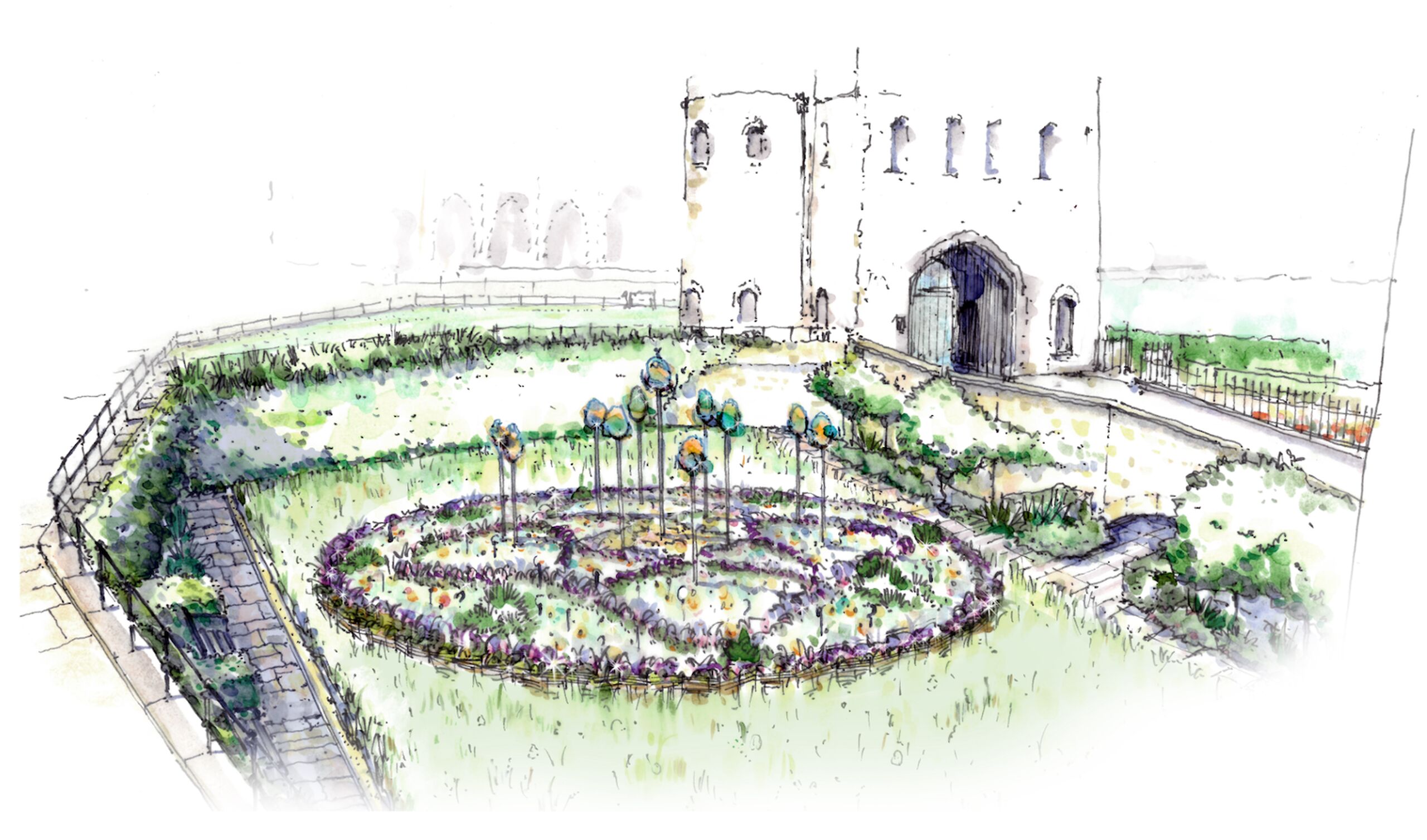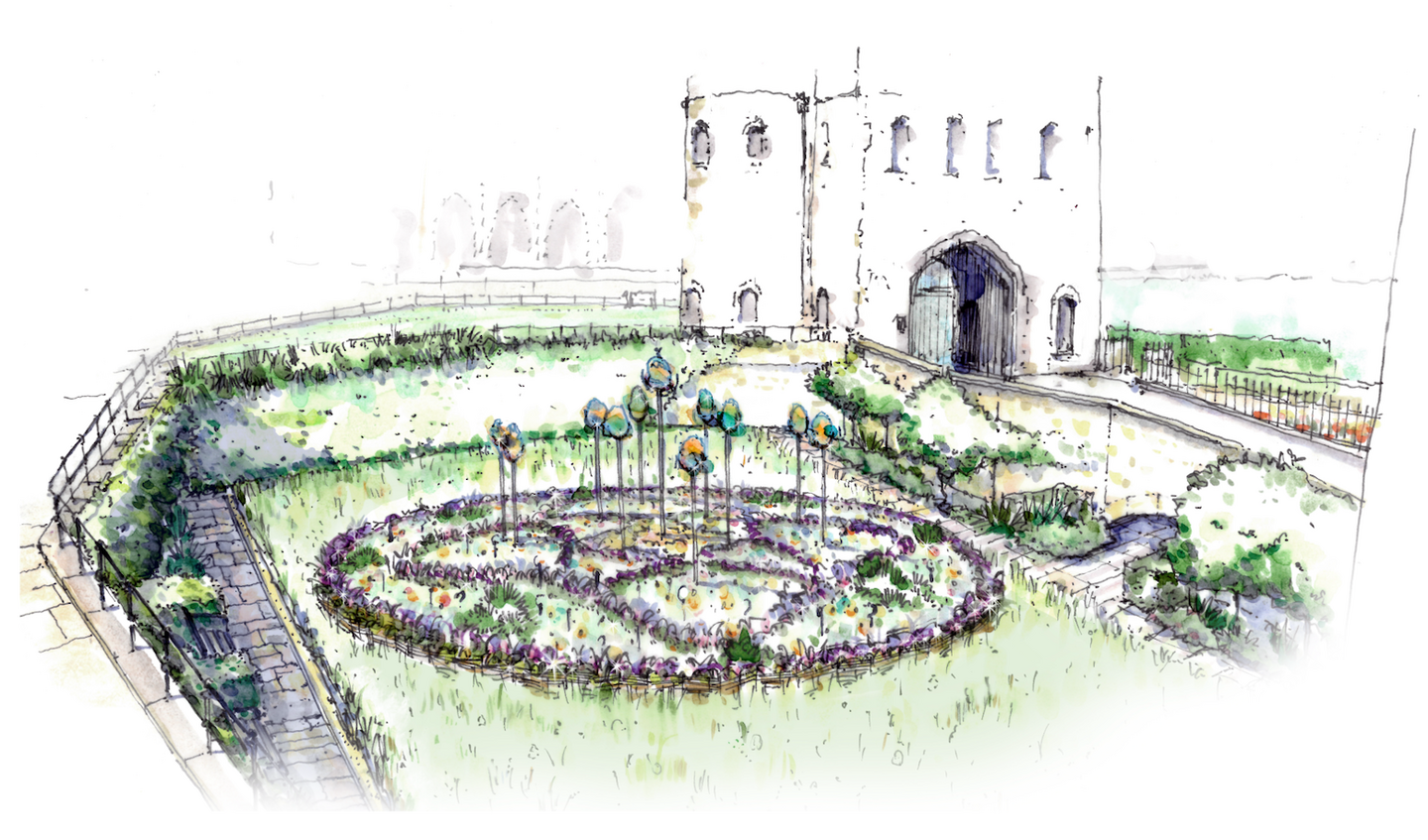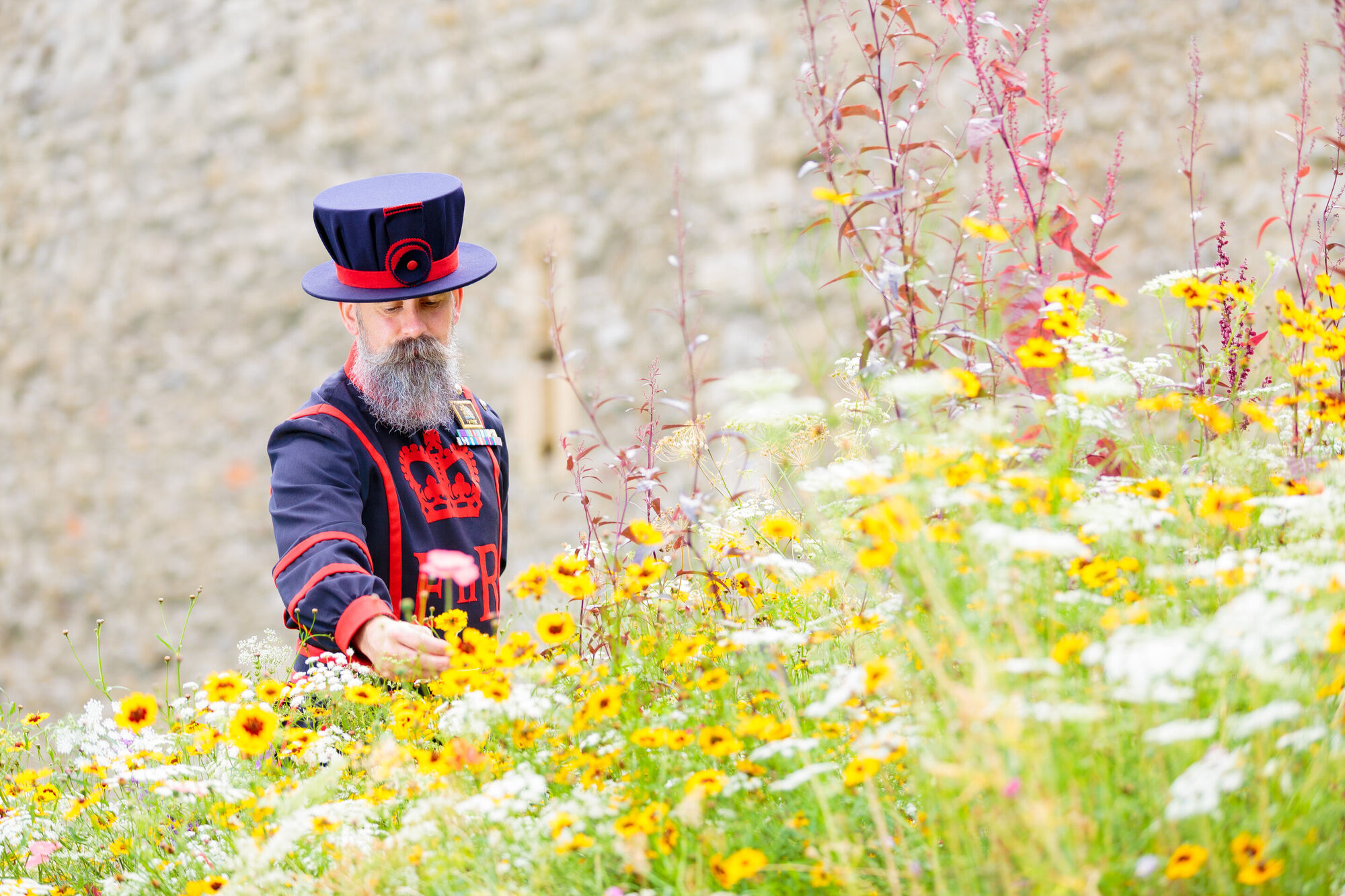

‘Queen’s Garden’ to be created at Tower of London as part of Superbloom celebration
A ‘Queen’s Garden’ will be created at the Tower of London this summer as part of Historic Royal Palaces’ Superbloom display in celebration of Her Majesty The Queen’s Platinum Jubilee, it has been announced today.
The concept for the garden, developed by Andrew Grant and James Clarke of award-winning landscape architecture practice Grant Associates, the lead designers for the Superbloom project, draws on the colours, shapes and motifs employed by famed British couturier Sir Norman Hartnell for The Queen’s 1953 coronation gown.

A lawned area known as the Tower’s Bowling Green will be transformed into an elegant garden featuring a combination of meadow flowers, topiary and summer-flowering perennials, bulbs and ornamental grasses. The layout of the space – with its concentric scalloped hedging – is intended to evoke the scalloped tiers of embroidery which feature on the gown’s silk skirt.
Nigel Dunnett – the Lead Horticulturalist for Superbloom – has selected a delicate semi-formal structure of shrubs such as lavender, santolina and brachyglottis greyi to frame a sparkling mix of summer flowers, hinting at the gold bugle beads, pearls and diamante which dazzled viewers around the world on coronation day.
Our challenge was to create a garden that linked the Queen’s coronation to the flowers of Superbloom; Sir Norman Hartnell’s coronation gown seemed a perfect reference and one with flowers at the heart of the story. The design of the gown suggested a geometry and basic colour scheme for the garden whilst the embroidered flowers, representing multiple nations, offered a sense of the richness and diversity of Superbloom. By representing these flowers through glass art we wanted to express the exquisite craftsmanship of the original dress and bring some of that sparkle into the garden experience. This is a relatively small garden within the overwhelming scale of Superbloom but we hope it provides an intimate perspective to the event, bringing focus to the underlying celebration of the Queen’s Platinum Jubilee.

Rising from the garden will be 12 cast glass forms representing the national emblems featured in Hartnell’s embroidered design, including the thistle of Scotland, the Australian wattle and Canadian maple leaf. In the centre of these motifs will sit a glass crown, a reminder of the Tower of London’s ancient role as home of the Crown Jewels; the sacred regalia used in Her Majesty’s coronation, and those of previous British monarchs going back centuries. Specially created for the Queen’s Garden by glass artist Max Jacquard, these hand-crafted artworks will catch the light and provide an elegant visual spectacle.
The Queen’s Garden is a really integral part of our plans to mark the Platinum Jubilee at the Tower of London this summer, and it seemed only fitting to share news of this tribute from us at Historic Royal Palaces on Her Majesty’s birthday. In its inspiration, the garden references the Tower’s ancient association with coronations, while drawing on the best of contemporary horticultural design and British craftsmanship in its creation.
The Queen’s Garden will be in bloom ready for the Jubilee Weekend and will remain in situ until the end of September. Designed to be viewed from the outside – in the spirit of other picture gardens cared for by Historic Royal Palaces at Hampton Court Palace and Kensington Palace – it can be enjoyed by all those visiting the Tower of London or Superbloom over the summer months.
The Garden has been commissioned by Historic Royal Palaces as part of this summer’s Superbloom project, which will see the Tower of London encircled by millions of flowers in celebration of the Platinum Jubilee of Her Majesty The Queen.
With favourable weather, the bloom will begin to flourish at the beginning of June, filling the historic dry moat with a vibrant field of flowers and creating a welcoming new habitat for wildlife. The ‘Superbloom’ will then evolve throughout the Summer, becoming a haven for pollinators and creating a stunning spectacle of changing colours and patterns, flowering until September. With a planting scheme designed to attract bees, pollinators and seed-eating birds, the display will provide a biodiverse space to support wildlife.
Historic Royal Palaces hopes that the transformation of the moat – a previously underused space – will inspire similar positive change across the country. Schoolchildren are being invited to take part in a major schools initiative to support the project; growing their own displays, created from a special palette of seeds, to bloom alongside the one at the Tower – and learning about what gardens can do to improve sustainability and support ecology as part of that process.


